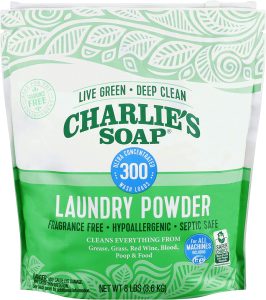Keeping your backpack clean and in good condition is essential, whether you’re using it for school, work, travel, or outdoor activities. In this comprehensive guide, we’ll walk you through the step-by-step process of how to clean a backpack without washing machine.
Why is it important to clean your backpack? A backpack is exposed to a lot of dirt, sweat, spills, and bacteria, which can not only make it look dirty and worn-out but also compromise its durability and hygiene. Regular cleaning can help extend the life of your backpack and ensure that it stays fresh and functional.
Benefits of cleaning your backpack regularly
Cleaning your backpack regularly has numerous benefits, such as:
- Preventing mold and mildew growth
- Removing stains and odors
- Preserving the quality of the backpack material
- Reducing the risk of germs and bacteria
- Maintaining a professional or stylish appearance
In this article, we’ll cover everything you need to know about cleaning your backpack without a washing machine. We’ll provide detailed instructions, tips, and tricks for cleaning the exterior and interior of your backpack, as well as deep-cleaning and maintaining it. We’ll also answer some common FAQs and offer suggestions for preventing future stains and damage. By the end of this guide, you’ll have all the information you need to keep your backpack looking and functioning at its best.
how to clean a backpack without washing machine
1. Preparing Your Backpack for Cleaning
Before you start cleaning your backpack, it’s important to prepare it properly to ensure the best possible results. Here are the steps you should take to clean a backpack without washing machine:
Emptying the contents of your backpack
The first step is to remove all the items from your backpack. Make sure to check all the pockets and compartments to ensure that you haven’t left anything inside. If there are any fragile or electronic items, take them out and set them aside.
Removing loose dirt and debris
Next, use a soft-bristled brush or a dry cloth to gently remove any loose dirt, dust, or debris from the surface of your backpack. This will make the cleaning process more effective and prevent any grime or dirt from being pushed deeper into the fabric.
Checking for and treating any stains or spots
Inspect your backpack for any stains, spots, or discoloration. Depending on the type of stain, you may need to use a specific cleaning solution or treatment. For example, for grease stains, you can use dish soap, while for ink stains, rubbing alcohol or vinegar may be more effective. Make sure to follow the instructions carefully and test the solution on a small, inconspicuous area first to avoid damaging the fabric.
Choosing the right cleaning solution to clean a backpack without washing machine
Finally, choose a cleaning solution that’s appropriate for the type of fabric your backpack is made of. For example, for nylon or polyester backpacks, a mild detergent or a solution of water and vinegar may be suitable, while for leather backpacks, a specialized leather cleaner may be required. Avoid using harsh chemicals or bleach, as they can damage the fabric or discolor it.
Charlie’s Soap Laundry Powder

2. Cleaning the Exterior of Your Backpack
The exterior of your backpack is the most visible and prone to dirt, stains, and wear and tear. Here are the steps you can follow to clean it effectively:
Spot cleaning your backpack with a cloth
Start by using a clean, damp cloth to spot-clean any stains or marks on the surface of your backpack. Gently rub the affected area with the cloth, using a circular motion, until the stain starts to lift. Avoid scrubbing too hard, as it can damage the fabric or cause the stain to spread.
Using a soft-bristled brush to remove dirt and grime
If there’s a lot of dirt or grime on your backpack, you can use a soft-bristled brush, such as a toothbrush or a shoe brush, to scrub it off. Dip the brush in a mixture of water and mild detergent or vinegar, and gently scrub the surface of your backpack in a circular motion. Make sure to focus on the areas that are the most soiled, such as the bottom, corners, and straps.
Cleaning zippers, straps, and other hardware
The zippers, straps, and other hardware on your backpack can accumulate dirt, dust, and sweat, which can make them look dingy and unappealing. To clean them, use a cotton swab or a soft-bristled brush dipped in a solution of water and mild detergent or vinegar. Gently scrub the hardware, taking care not to damage it, and wipe it dry with a clean cloth.
Applying a protective spray
To keep your backpack looking and smelling fresh, you can apply a protective spray after cleaning it. Look for a spray that’s suitable for the type of fabric your backpack is made of and follow the instructions carefully. A protective spray can help repel water, dirt, and stains, and prolong the life of your backpack.
3. Cleaning the Interior of Your Backpack
The interior of your backpack can harbor dirt, dust, and bacteria, especially if you use it frequently. Here’s how to clean it properly:
Shaking out debris
Start by turning your backpack upside down and shaking it gently to remove any loose debris or crumbs that may have accumulated inside. You can also use a soft-bristled brush or a lint roller to remove any stubborn debris.
Vacuuming the interior of the backpack
If there’s a lot of dust or dirt inside your backpack, you can use a vacuum cleaner with a soft brush attachment to clean it. Make sure to vacuum all the pockets and compartments, as well as the seams and corners. This will remove any dirt or dust that may have settled in hard-to-reach areas.
Spot cleaning stains or spills
If there are any stains or spills inside your backpack, you can spot-clean them using a solution of water and mild detergent or vinegar. Dampen a clean cloth with the solution and gently blot the affected area until the stain starts to lift. Avoid saturating the fabric with too much water, as it can take a long time to dry and may cause mildew or mold.
Using an antibacterial spray
To kill any bacteria or germs that may be lurking inside your backpack, you can use an antibacterial spray. Look for a spray that’s safe for the type of fabric your backpack is made of and follow the instructions carefully. A few sprays inside your backpack can help keep it fresh and clean.
4. Drying and Maintaining Your Backpack
After cleaning your backpack, it’s important to dry it properly and maintain it to prolong its lifespan. Here’s what you should do:
Air-drying your backpack
Never put your backpack in the dryer, as it can damage the fabric, zippers, and other hardware. Instead, hang your backpack upside down in a well-ventilated area, away from direct sunlight or heat sources. Make sure all the zippers and pockets are open to allow air to circulate inside. Depending on the size and thickness of your backpack, it may take several hours or even a day to dry completely.
Preventing mold and mildew
If your backpack is damp or wet, it can be a breeding ground for mold and mildew, which can damage the fabric and cause unpleasant odors. To prevent mold and mildew, make sure your backpack is completely dry before storing it. If you live in a humid climate, consider using a dehumidifier or a moisture absorber in the storage area to keep the air dry.
Lubricating zippers and hardware
The zippers and hardware on your backpack can become stiff or hard to open and close if they’re not lubricated regularly. To prevent this, use a small amount of silicone spray or a lubricant specifically designed for zippers and hardware. Apply the lubricant to a cloth and rub it gently on the zippers and other hardware, taking care not to get it on the fabric.
Storing your backpack
When you’re not using your backpack, store it in a cool, dry place, away from direct sunlight or heat sources. Make sure it’s not compressed or folded, as this can cause creases or deformities in the fabric. If possible, hang your backpack on a sturdy hook or a hanger to maintain its shape.
5. Deep Cleaning Your Backpack
If your backpack has been heavily soiled, has stubborn stains or odors, or hasn’t been cleaned in a long time, it may require a deep cleaning. Here’s what you need to know:
Knowing when to deep clean your backpack
Deep cleaning your backpack should be done as needed, depending on how often you use it and how dirty it gets. Signs that your backpack may need a deep cleaning include strong odors, visible stains or discoloration, or a buildup of dirt and grime on the fabric.
Choosing the right cleaning solution for your backpack material
Different backpack materials require different cleaning solutions. For example, a canvas backpack can be cleaned with mild detergent and water, while a leather backpack may require a special leather cleaner. Always check the care label on your backpack or consult the manufacturer’s instructions to determine the appropriate cleaning solution.
Hand-washing your backpack
For a deep cleaning, it’s best to hand-wash your backpack using a soft-bristled brush or a sponge. Fill a basin or bathtub with lukewarm water and add the appropriate amount of cleaning solution. Submerge your backpack in the water and gently scrub it with the brush or sponge, paying special attention to any stained or soiled areas. Rinse your backpack thoroughly with clean water, making sure to remove all the soap and suds.
Removing tough stains or odors
For tough stains or odors, you may need to use a specialized cleaner or treatment. For example, baking soda can help remove odors from a backpack, while a vinegar solution can help remove mold and mildew. Always test any new cleaning solution on a small, inconspicuous area of your backpack before using it on a larger area.
By following these steps, you can deep clean your backpack and restore it to its original condition.
6. Tips and Tricks for Keeping Your Backpack Clean
Keeping your backpack clean doesn’t have to be a daunting task. Here are some tips and tricks to help you maintain a clean backpack:
Using a rain cover for your backpack
If you frequently use your backpack in wet or rainy conditions, consider investing in a rain cover. This will help protect your backpack from moisture and prevent dirt and debris from sticking to the fabric.
Avoiding spills and stains
Prevention is key when it comes to keeping your backpack clean. Avoid placing items that are likely to spill, such as food or liquids, in your backpack. If you do need to carry these items, make sure they are properly sealed in a spill-proof container.
Regularly wiping down your backpack
Take a few minutes each week to wipe down the exterior of your backpack with a damp cloth. This will help remove any surface dirt and prevent it from building up over time.
Choosing the right backpack for your needs
When selecting a backpack, consider the material, size, and features that will best suit your needs. For example, if you frequently carry electronics, look for a backpack with a padded laptop sleeve. If you need a backpack for hiking or camping, choose one that is made from durable, water-resistant material.
By following these tips and tricks, you can help keep your backpack clean and in good condition for years to come.
Conclusion – clean a backpack without washing machine
Cleaning your backpack is an important part of maintaining its condition and extending its lifespan.
Remember to always check the care label on your backpack and follow any manufacturer’s instructions for cleaning and maintenance. With a little bit of effort and attention, you can keep your backpack looking and functioning like new.





